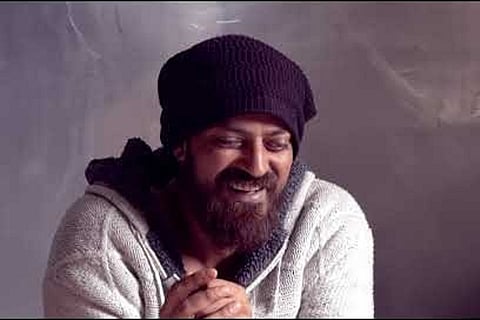

With his balaclavas, a long brown beard, sweatshirts and stoles, Xuhaib Maqbool Hamza might pass for an actor. He has once done that, acted in a couple of feature films. But his love has always rested on the camera, one he has carried everywhere through all his passions and jobs – as a photo journalist, nature and fashion and commercial photographer, and even as a radio jockey. Till one day in 2016, he would be injured along with his camera, shot by a pellet gun in Kashmir, where he was on duty.
Xuhaib’s heartbreaking tale is told in less than three minutes in The Broken Camera – My Rode Reel 2020, by Gopal Menon, a documentary filmmaker from Kerala, who has been frequenting Kashmir for over two decades now. The first film he made is of Kashmir, PAPA 2, on the interrogation centre of Border Security Force (BSF) and enforced disappearances of Kashmiri men. “I kept going back to Kashmir every year after that that,” Gopal tells TNM in an interview.
There have been several documentaries in the years that passed – a comprehensive one on the Dalit issue (Resilient Rhythms), a film on the Gujarat pogrom the same year it happened (Hey Ram: Genocide in the Land of Gandhi), a documentary on Nagaland (Naga Story: The Other Side of Silence), on Hindu fascism in Gujarat (Unholy War), on the Muzaffarnagar riots (Killing Fields of Muzaffarnagar) -- and so on.
Gopal hadn’t gone to Kashmir to make a film about Xuhaib. It was during a short vacation that the two of them met and got very close. At one point, Xuhaib began telling his story.
Gopal (right) shoots Xuhaib on camera
In the documentary, you don’t spot his blind eye till Xuhaib recounts that day in 2016 when he was working as a photo journalist, covering a non-violent protest over the death of Hizbul commander Burhan Wani. A security person moved towards him with a pellet gun and Xuhaib showed him the camera to indicate that he was on duty, not a protester. But the man shot anyway.
“More than 250 pellets went into his body, two of them into his retina,” says Gopal.
Xuhaib had three surgeries after that. The doctor at the government hospital then told him it was no use, his vision was not going to improve. Xuhaib fell into depression. He began having thoughts of suicide. It was his girlfriend that pulled him aside and gave him the strength he needed to come back to life.
“She said we will die together. She made me promise I will not harm myself,” Xuhaib says with a smile in the documentary.
He got another camera with the help of friends. He began shooting again, radio jockeying again.
But all his attempts to repair his old pet, the camera that blasted in the pellet attack, have been in vain. “I changed the display, the motherboard, the sensor. I changed everything. Invested a lot of money… I have two blurred lenses now – one in my body and one in my hand,” he says with a smile that melts you.
Pellet guns were allowed to be used for crowd control by the government since 2010. It was described as a non-lethal weapon, but Gopal says it is not. "At least 2,000 people have been partially injured, hundreds seriously injured and 27 people were killed by pellet shooting. Xuhaib was watching a peaceful namaz of protesters when the security person fired at him. One fire could spray several pellets. Most pellet victims I have met had 200 to 300 pellets shot into their body," Gopal says.
Xuhaib has been a metaphor for the trouble-torn valley of Kashmir, Gopal says. "He was born in 1988 and the militancy in Kashmir began in 1989. I call him a child of militancy," Gopal says.
Xuhaib has planned a project of his own, of pellet victims, of their perspective of the world, of how he himself sees the world with his left eye.
Watch the documentary: